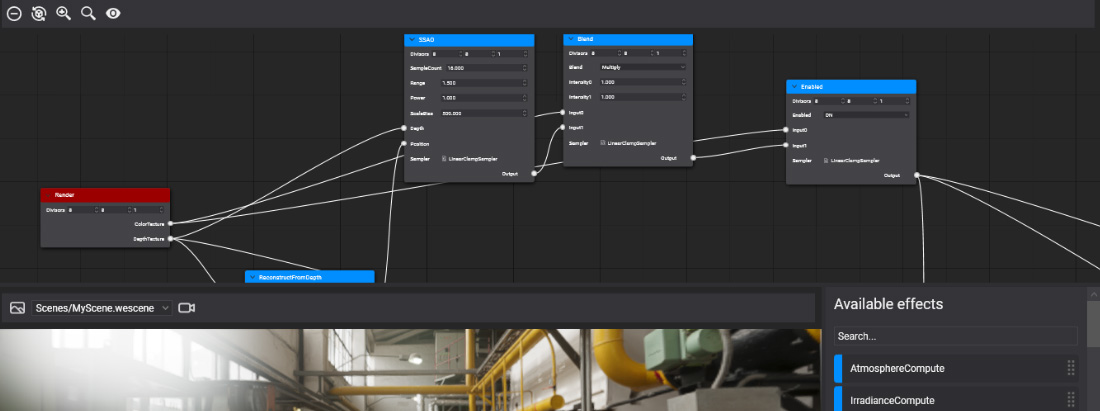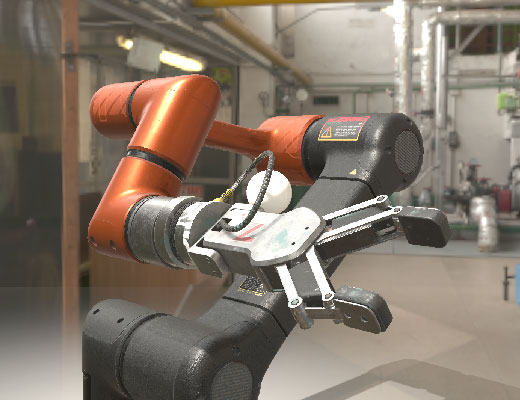Postprocessing Graph

The Post-Processing graph allows you to apply visual effects like Tonemapping, Depth of Field, Temporal Anti-Aliasing, SSAO, SSR, etc., to your scene's final render. The Post-Processing graph is composed of interconnected nodes that apply visual effects to the output render before displaying it on the screen. Each node is a compute effect.
Using Post-Processing, you can achieve a cinematic appearance for your applications:
| Post-Processing Disabled | Post-Processing Enabled |
|---|---|
 |
 |
Post-Processing and Compute Effects
A post-processing graph is a group of compute effect nodes that apply effects to the initial render node and connect the result to the final Screen node. You can create a post-processing graph with a single node or multiple nodes, depending on your requirements. Post-Processing graphs are a type of asset and have a dedicated Editor named the Post-Processing Graph Editor.
Default Post-Processing Graph
In Evergine, the default project template imports the Evergine.Core package, which includes the Default Post-Processing graph with the most common post-processing visual effects used in a project. Therefore, most of the time, you will use this asset, creating a new custom post-processing graph only to develop new visual effects or to meet performance needs.